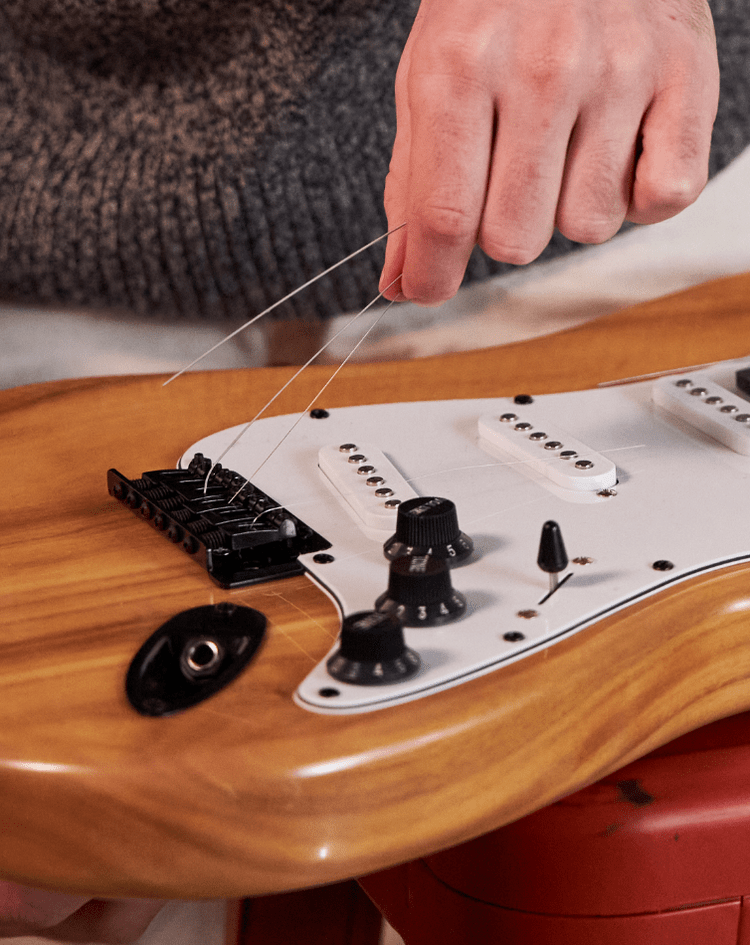Playing the guitar is an enjoyable and rewarding hobby, but over time, even the best guitars will need some maintenance. Whether you need to replace your guitar strings, adjust the action, or fix common problems, such as buzzing or intonation issues, there are some simple steps you can take to keep your guitar in great shape. In this blog, we’ll discuss how to replace guitar strings, adjust the action, and fix common problems on your guitar.
Replacing Guitar Strings
Over time, guitar strings will wear out and lose their tone. When this happens, it’s time to replace them. Here’s how to do it:
- Loosen the old strings: Use the tuning pegs to loosen the old strings until they’re completely slack.
- Remove the old strings: Remove the old strings from the tuning pegs and bridge.
- Clean the guitar: This is a good time to clean the guitar and remove any dirt or grime that may have accumulated.
- Install the new strings: Insert the new strings through the bridge and thread them through the tuning pegs. Use a string winder to wind the strings onto the tuning pegs.
- Tune the guitar: Tune the guitar using a tuner or tuning app.
Don't miss our step-by-step tutorial on YouTube showcasing the easy and effective process of changing guitar strings.
Need help tuning your guitar? Check out our 'How To Tune Your LyxPro Guitar' video.
Adjusting the Action
The action refers to the distance between the strings and the fretboard. If the action is too high, it can make playing the guitar difficult. Here’s how to adjust the action:- Identify the problem: Play each fret on the guitar and listen for buzzing or dead notes.
- Adjust the truss rod: If the action is too high, you may need to adjust the truss rod. Use a truss rod wrench to adjust the truss rod until the action is at the desired height.
- Adjust the bridge: If the action is still too high, you may need to adjust the bridge. Use a screwdriver to adjust the height of the bridge until the action is at the desired height.
Fixing Common Problems
Buzzing, intonation issues, and other common problems can be frustrating for guitar players. Here are some tips for fixing these issues:- Buzzing: Buzzing can be caused by a number of factors, such as loose frets or a high action. Check the frets for looseness and adjust the action if necessary.
- Intonation issues: Intonation issues can be caused by a number of factors, such as an incorrectly placed bridge or a wornout saddle. Check the bridge and saddle for wear and adjust or replace them if necessary.
- Dead notes: Dead notes can be caused by a number of factors, such as a worn-out fret or a dirty fretboard. Check the frets for wear and clean the fretboard if necessary.
Maintaining your guitar is an important part of being a guitar player. By following these simple steps, you can replace your guitar strings, adjust the action, and fix common problems. Remember to take your time and be patient, and your guitar will continue to provide you with great sound and enjoyment for years to come.




